ACCESS READS: CHANGING MINDSETS
Michael J. Kendrick has forty years’ experience as an independent consultant in human services and community work.
Michael’s work as an advocate, activist, teacher, consultant, writer and advisor has seen him work with governments, service organisations, advocacy groups, professional bodies, service providers and community groups in multiple countries including; the United States, Canada, Australia, New Zealand, Sweden, the Netherlands, Ireland, Scotland, England, Northern Ireland and Belgium, as well as Nicaragua, Honduras, Ethiopia, Arab Emirates, South Korea, Mexico, and Guatemala to implement, in practical ways, the principles that underpin his ideas and writings.
His interests in ethical leadership, social integration and ethics, innovation, advocacy, personalised support and reforms in human services are reflected in his writings on subjects such as; leadership, service quality, the creation of safeguards for vulnerable people, social integration, change, innovation, values, advocacy, the role of individuals and small groups advancing change and reform in the human services field.
Family Advocacy has taken inspiration from Michael J Kendrick’s ideas on Positive Values Based Leadership, highlighted in the following article.
People with disabilities historically were regarded as biologically inferior and a homogenous group viewed as ‘objects’ of charity, medical treatment and social protection. In his writings Michael J Kendrick makes the point that Western history is a story of people with disabilities being deemed not only inferior and undesirable but also, ‘persons that should be purged from society which lead to segregation and congregation as a desirable and entrenched practice.’
Indeed, as Kendrick points out, these practices were ‘government sanctioned policies in multiple countries along with other widespread involuntary practices such as; sterilisation of people with disabilities, infanticide and denial of suitable medical care compounded by a disproportionate likelihood of people with disabilities experiencing victimisation, crime, mistreatment and abuse.’
Tracing the evolution of changing attitudes regarding unequal and unjust treatment of people, based on their physical or mental disabilities, to Scandinavia in the mid 20th century Kendrick points to this period as the beginning of a social movement based on ‘normalisation’ principles. People with disabilities were beginning to be seen and treated just like everyone else, which was in stark contrast to long held and widespread beliefs.’
By the 1980’s mindsets had evolved to a point where people with disabilities were taking on social roles within their communities, which Kendrick indicates is referred to as, ‘Social Role Valorisation Theory’. This is where rather than just being physically present in a community, emphasis is given to ‘the importance of persons with disabilities occupying roles and being respected for them.’
To get to this point Kendrick acknowledges the part Valued Social Participation, as an organising ideal for advocates, played in changing mindsets and bringing about greater degrees of respect for the voices of people with disabilities. He makes a case that when such ideas are promoted, real life examples will emerge confirming the worth of the idea.
Since the late 1970s, he writes, ‘We have seen people with disabilities gradually occupy all manner of social roles previously denied them, including roles they had not occupied at any other time in history, such as attendance in [tertiary] education, and employment in all kinds of occupations ranging from authors to actors, entertainers, business owners, members of sporting and leisure community clubs etc.’
The effect of these ideas being implemented was a broadening of perceptions within the general public as to how people with disabilities can not only be present within a community but also successful and valued members.
Kendrick advocates for being cognisant of the catalysts and pathways that paved the way for these mind-shifts, to better understand and illuminate which strategies should be further pursued in the future to sustain and expand on gains made to date.
Kendrick is a proponent of Positive Values Based Leadership, which is much more than simply embracing positive values in symbolic terms. He writes, ‘values that are not acted upon quickly become empty of meaning. If values are not asserted they have no influence or impact.’
Positive Values Leadership, Kendrick explains, ‘facilitates measurable change, for the better, and ensures people with disabilities are extended the same respect as other citizens within a family, a school, the workforce, law, neighbourhoods, civic organisations and so on.’
Kendrick points out that pioneering ‘leaders’ such as families that rejected the ‘expert advice’ of their era, to relegate their family member(s) with a disability to residential institutions, were infact catalysts for change. Their choice to dissent against accepted ideas about people with disabilities was the basis for what became known as the Community Living Movement. Were it not for this alternative thinking, he writes, ‘dehumanising perceptions would not have been challenged. Over time, the ideas of the Community Living Movement matured and evolved into respect for the actual voices of people with disabilities that we see today’, a direct consequence of the actions of value-based advocates.
Positive values and vision were integral, Kendrick argues in the undoing of, ‘callous and indifferent actions, negative stereotypes, belief systems and conduct, and were it not for those early leaders, who were willing to raise consciousness, quarrel with society and offer positive visions, values and practical alternatives, society would not have either known better or been called to be better.’
Positive leaders, Kendrick continues, ‘both formal and informal, individual and collective, play a critical role in offering fresh directions and new hope to society and we should fully appreciate their catalysing effect.’
He does concede however that leadership ‘always runs the risk of being progressive in intent, but paternalistic in practice’ and reminds us that, ‘however benign and welcome positive action is, the actual ‘first-person’ voice of people with disabilities must be respected and attended to.’
As a continuum of positive change the notion of Self-Advocacy developed, summed up by the term; “Nothing About Me Without Me”. This concept, Kendrick explains, ‘is where people with disabilities are not strangers living apart from their communities, rather they are of the community and seek distinctive and fulfilling lives within it.’ Increasingly, Kendrick continues, ‘this has meant the voice of people with severe impairments, limited capacity to communicate have also become included in embodying the principle that the voice of people with disabilities should be respected no matter what level of impairment they may live with.’
This shift away from ‘others’ providing the required positive leadership, albeit through values and vision, to the very people with disabilities participating and ‘leading’ the changing face of their community has, Kendrick admits, ‘of course been thwarted, resisted and ignored at many junctures. We must be realistic’, he says, acknowledging, ‘it has been a repeated struggle as to whose voice actually gets acknowledged and listened to, and which messages are taken seriously.’
A signal of the rise of Self Advocacy was the adoption of The Convention on the Rights of Persons with Disabilities and its Optional Protocol in 2006 at the United Nations Headquarters in New York, the first comprehensive human rights treaty of the 21st century.
Notably, Kendrick says, ‘people with disabilities played decisive roles in the work of the UN in producing the Convention’.
As newer services are increasingly putting the people with disabilities at the centre of decision making about how services are designed, organised and overseen rather than incidentally, Kendrick notes the empowering impact self-direction and self-management has;
‘Self-determination developments are not accidental’, he writes, ‘they are a deliberate outgrowth of the recognition that people with disabilities were routinely dominated by the decision makers in their services (from low level staff through to senior officials) and a direct response to the criticisms of people with disabilities about their experience of being disempowered by their services.’
Self-determination, Kendrick says, ‘goes well beyond how services are structured. It calls into question many aspects as to how communities, networks and families operate in relation to upholding and respecting the autonomy of people with disabilities.’
Once again, Kendrick points out, it was leading advocates propelled to challenge attitudes, beliefs, petty habits and at times unconscious insensitivities in everyday life and daily encounters’ that brought about change. A handful of disruptors who were also people with disabilities and advocates made it clear change was not only reasonable, but also a priority.
Just a generation ago, Kendrick writes, ‘much more was known about the deficits, limitations and negative traits of people with disabilities. Opposition to this ‘deficit model’, was instigated by values-based advocates, disability activists and leaders who reframed perceptions to highlight positive qualities and the potential of people with disabilities. This counter movement Kendrick notes, ‘was cultural in nature and through education lessened the grip of prejudicial stereotypes.’
Kendrick highlights the fact that today, ‘the voices of people with disabilities are present on television, radio, in newspapers, on the internet and on social media, shining a light on unhelpful images and content in political publications, literature and art.’ These significant developments in western societies, he goes on to say, have intentionality behind them ‘Disability is a social construct that can be socially amended.’
Deliberate efforts by countless people over the decades to bring about change serves as an instructive lesson on the viability of intentional social change.
To conclude, Kendrick acknowledges that, ‘despite concerted efforts to reverse dehumanising treatment of people with disabilities the facts need to be asserted repeatedly in everyday life to ensure we do not regress. And while there have been noticeable improvements, in western societies, over the last six-to-seven generations it would be misleading to say that respect for the voice of people with disabilities has become normative and systematic. Disrespect in all manner of ways still continues despite overall conditions having improved.’
Family Advocacy concurs. While people with disabilities now routinely occupy valued social roles, many still do not. And while public perception of people with disabilities has been enhanced by their inclusion and participation in communities, challenges remain to improve the quality and scope of inclusion.
As Kendrick points out, ‘gone might be the days of hysteria and fear of the presence of disabled people in community life, but also true is that resistance remains at many levels despite advancements and progress.’
—
This article is derived from Michael J. Kendrick’s Historical Contributors Towards Increasing Respect For The Voices Of People With Disabilities In Western Societies originally published in the ‘International Journal of Disability, Community & Rehabilitation’ Volume 9, No. 1 (2010)
CONTINUE READING:

WHAT IS INCLUSION
The promotion, adoption and implementation of inclusive practices, which involves changing policies, practices and attitudes within schools.

HOW WE INCLUDE
Inclusive classrooms and schools embrace universal design as the foundation for cultivating inclusive attitudes and practices.

CHANGING MINDSETS
Bringing about change one mind at a time is integral to improving the lives of people with disability.

AUSTRALIAN EXPERIENCE
Exemplar inclusive educational practices are happening in Australia. See the possibility and potential of Inclusion here and now.

WHY INCLUDE
All children have the right to be included, to be represented in, to have access to and to receive high-quality education and supports.

TEACHER IMPACT
All classroom teachers have a role in creating schools & learning environments where all children can learn and feel they belong.
YOU MIGHT ALSO LIKE ACCESS TALKS:
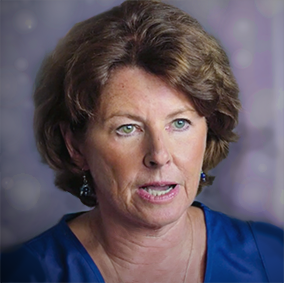
WHAT IS INCLUSION
The promotion, adoption and implementation of inclusive practices, which involves changing policies, practices and attitudes within schools.
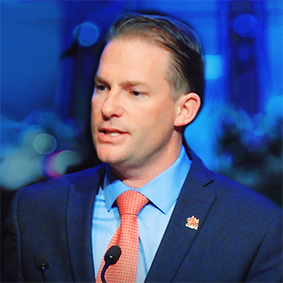
HOW WE INCLUDE
Creating inclusive classrooms & schools starts with vision, policy, systems change, curriculum design and teaching practice.
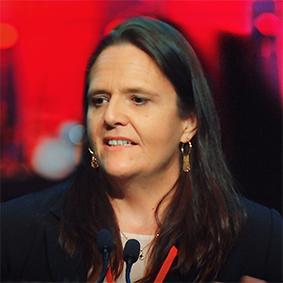
WHY INCLUDE
High quality education & supports enable all students to acquire success in their education and is the basis of an inclusive life and society.
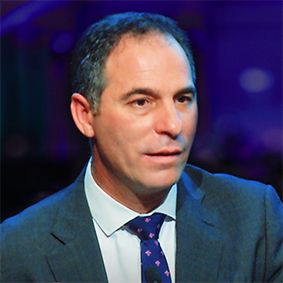
TEACHER IMPACT
All classroom teachers have a role in creating schools & learning environments where all children can learn and feel they belong.
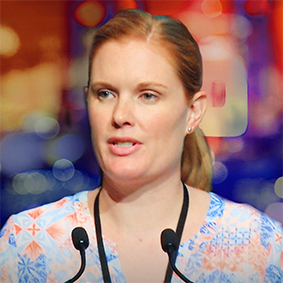
CHANGING MINDSETS
Whole school transformation requires courage, leadership & honest reflection to identify the need for change and set about making it happen.

AUSTRALIAN EXPERIENCE
Exemplar inclusive educational practices are happening in Australia. See the possibility and potential of inclusion here and now.
A FAMILY ADVOCACY INITIATIVE
This site is edited and maintained by the Advocacy and Leadership Development team.
Image attributions: Photos supplied and screenshots from Access Symposium videos.

